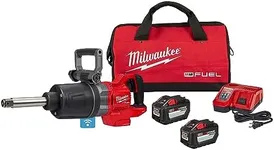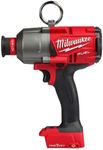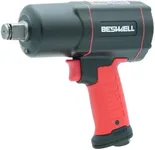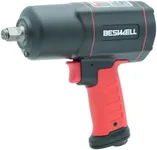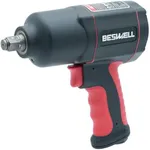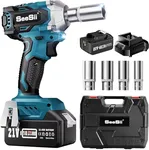Buying Guide for the Best Milwaukee Impact Wrenches
When choosing an impact wrench, it's important to consider the specific tasks you'll be using it for. Impact wrenches are powerful tools designed to deliver high torque output with minimal effort, making them ideal for loosening and tightening bolts and nuts. To find the best fit for your needs, you'll need to understand the key specifications and how they relate to your intended use. Here are the main specs to consider when selecting an impact wrench.TorqueTorque is the amount of rotational force the impact wrench can deliver. This is crucial because it determines the tool's ability to loosen or tighten fasteners. Torque is measured in foot-pounds (ft-lbs) or Newton-meters (Nm). For light-duty tasks, such as working on small engines or household projects, a torque rating of 100-200 ft-lbs may be sufficient. For automotive work or medium-duty tasks, look for a wrench with 200-400 ft-lbs of torque. Heavy-duty applications, like industrial or construction work, may require 400 ft-lbs or more. Choose a torque rating based on the toughest job you expect to tackle.
Drive SizeThe drive size refers to the size of the square drive that holds the socket. Common sizes include 1/4-inch, 3/8-inch, 1/2-inch, 3/4-inch, and 1-inch. The drive size you need depends on the size of the fasteners you'll be working with. For small fasteners, a 1/4-inch or 3/8-inch drive is suitable. For general automotive work, a 1/2-inch drive is the most versatile and commonly used. Larger drive sizes, like 3/4-inch and 1-inch, are typically used for heavy-duty industrial applications. Match the drive size to the typical fasteners in your projects.
Speed (RPM)Speed, measured in revolutions per minute (RPM), indicates how fast the impact wrench can rotate. Higher speeds allow for quicker fastening and removal of bolts. Light-duty tasks may only require speeds up to 2,000 RPM, while medium-duty tasks might benefit from speeds between 2,000 and 3,000 RPM. For heavy-duty applications, look for impact wrenches with speeds exceeding 3,000 RPM. Consider the speed range that will help you complete your tasks efficiently without sacrificing control.
Impacts Per Minute (IPM)Impacts per minute (IPM) measure how many times the hammer mechanism strikes the anvil each minute. This affects the tool's ability to break loose stubborn fasteners. Higher IPM values generally mean more effective performance. For light-duty tasks, an IPM of 2,000-3,000 is usually adequate. Medium-duty tasks may require 3,000-4,000 IPM, while heavy-duty applications benefit from 4,000 IPM or more. Choose an IPM rating that matches the difficulty of the fasteners you'll be working with.
WeightThe weight of the impact wrench can affect your comfort and ease of use, especially during extended periods of work. Lighter models, typically under 5 pounds, are easier to handle and reduce fatigue, making them suitable for light to medium-duty tasks. Heavier models, over 5 pounds, may offer more power and durability, which is beneficial for heavy-duty applications. Consider how long you'll be using the tool and whether you need a lighter model for better maneuverability or a heavier one for more demanding tasks.
Power SourceImpact wrenches can be powered by electricity (corded or cordless) or air (pneumatic). Corded electric models offer consistent power but require access to an electrical outlet. Cordless models provide greater mobility and convenience, with battery life being a key consideration. Pneumatic models, powered by compressed air, are often more powerful and lighter but require an air compressor. Choose a power source based on your work environment and the availability of power or air supply.
ErgonomicsErgonomics refers to the design of the impact wrench and how comfortable it is to use. Features like a comfortable grip, balanced weight distribution, and vibration reduction can make a significant difference during prolonged use. Look for models with ergonomic designs that fit well in your hand and reduce strain. This is especially important if you plan to use the tool frequently or for extended periods.





